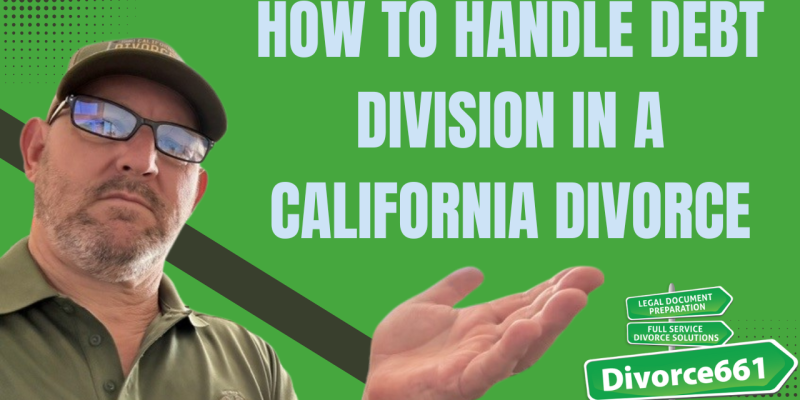How to Handle Debt Division in a California Divorce
I’m Tim Blankenship from Divorce661. In this article I break down one of the most important—and often overlooked—aspects of divorce in California: dividing debt. Get clear on what counts as community debt versus separate debt, how to negotiate a fair split, and why documenting and submitting your agreement to the court matters. If you prefer help, we offer a free consultation at Divorce661.com.
Why dividing debt matters as much as dividing assets
People tend to focus on who gets the house, the retirement accounts, or the savings—but debts are just as important. In California, which is a community property state, most debts incurred during marriage are shared 50/50 regardless of whose name appears on the account. That means a credit card or auto loan in one spouse’s name can still be community debt that both spouses are responsible for.
What is community debt (and what isn’t)?
Understanding whether a debt is community or separate is the key to a fair division:
- Community debts — Generally, debts incurred during the marriage for the community’s benefit. Examples include credit card debt accumulated for household expenses, auto loans taken out during the marriage, and tax liabilities for joint returns or taxes accrued while married.
- Separate debts — Debts incurred before marriage, after legal separation, or debts that can be traced to separate property or separate-purpose borrowing. For example, a loan taken before the marriage usually remains a separate obligation unless it was paid down with community funds.
Key point:
California is a community property state—so timing, purpose, and tracing matter more than whose name is on the account.
How to identify community vs. separate debt
To characterize a debt, ask:
- When was the debt incurred—before marriage, during marriage, or after separation?
- Who benefited from the funds or goods purchased with the debt?
- Were community funds used to pay down the debt?
- Can you document the source of funds (bank records, statements, receipts)?
Tracing documents and clear records make it much easier to prove whether a debt is community or separate. If documentation is unclear, the debtor may still be treated as equally responsible.
Negotiating debt division: trade-offs and practical solutions
Debt division doesn’t always have to be an even split on every account. Couples often negotiate practical trade-offs. For example, one spouse might agree to take on a larger share of credit card debt in exchange for keeping a larger portion of savings or a specific asset.
- Make sure any trade-off is fair and sustainable—taking on debt without the ability to pay it can create long-term problems.
- Consider who is legally liable to creditors after the divorce; a court order does not automatically change a creditor’s contracts with the named borrower.
- When possible, refinance or remove a spouse from joint accounts to avoid lingering liability.
Documenting your agreement and filing with the court
Whatever you agree to, get it in writing. A well-drafted, court-approvable agreement:
- Identifies each debt and states whether it is community or separate;
- Specifies who will be responsible for payment after divorce;
- Explains any asset-debt trade-offs (for example, taking more debt in exchange for more savings); and
- Is submitted to and approved by the court so it becomes enforceable.
Without proper documentation and court approval, you risk future complications and creditor claims that can drag on for years.
Real-life example
We worked with a couple who had over $20,000 in credit card debt. One spouse agreed to take on a larger portion of that debt in exchange for keeping more of the couple’s savings. We documented the agreement, prepared the paperwork, and submitted it to the court. The court approved it without issue, and both parties walked away with a clear, enforceable division that matched their negotiated trade-off.
How Divorce661 can help
At Divorce661 we help couples navigate debt division efficiently and fairly. Our services include:
- Identifying which debts are community versus separate;
- Structuring fair, court-approvable agreements and trade-offs;
- Preparing and filing all necessary paperwork so agreements are documented correctly.
Our goal is to make sure your debt division is handled cleanly and legally so you can move on with confidence and financial stability.
Recap and next steps
Remember these essentials:
- California is a community property state—most debts during marriage are shared 50/50.
- Name on an account does not determine responsibility—timing, purpose, and tracing do.
- Negotiated trade-offs (more debt for more assets) are common and workable if documented.
- Documenting your agreement and getting court approval protects you from future disputes and creditor claims.
If you need help identifying, structuring, and documenting debt agreements, visit Divorce661.com to schedule a free consultation. We’ll help make sure your debt division is fair, enforceable, and gives you peace of mind as you move forward.

